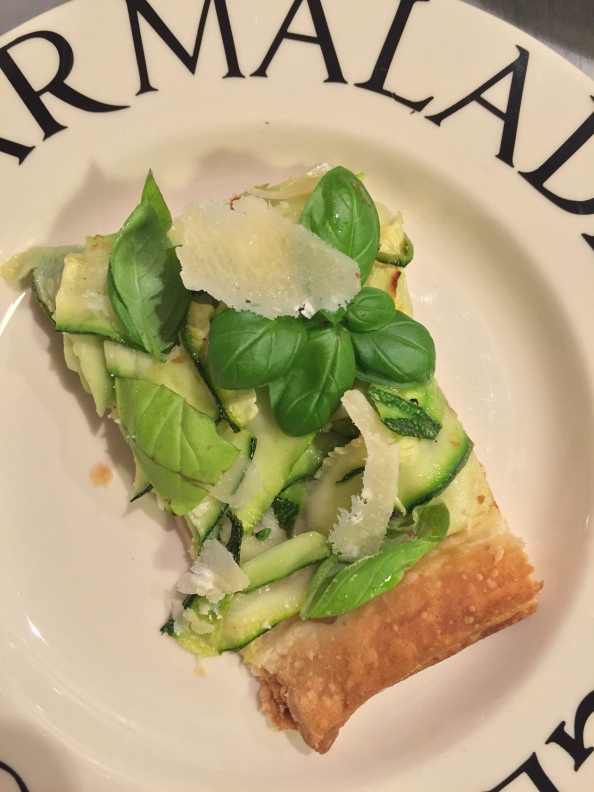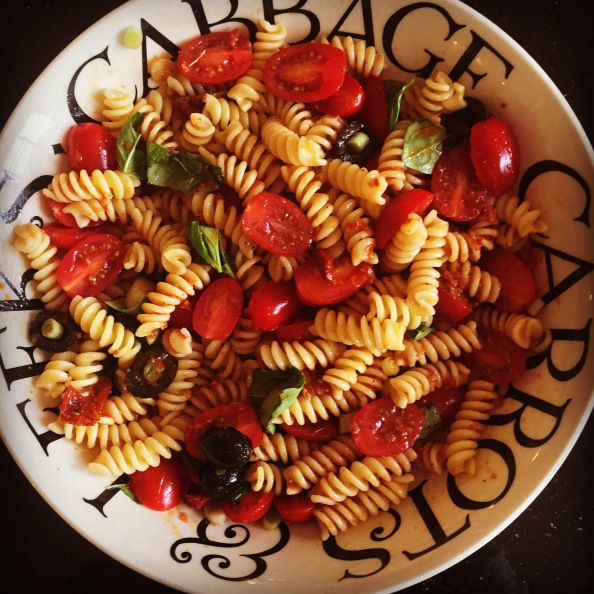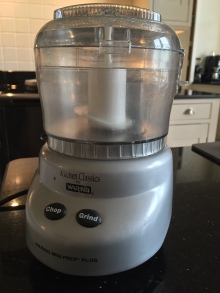The combination of pasta and tomato sauce is one of my favourite things, and I make it a lot. I probably make Felicity Cloake’s “perfect” sauce the most but not every time. Another favourite is the one I told you about here.
Whenever we eat this I’m transported back to when my boys were young. I would make it for them at least once a week; clean plates were guaranteed. Of course one could easily pick up a tub of sauce from the supermarket, and sometimes on busy days I would do this, but in truth it doesn’t take long to prepare your own. I’d like to think that’s what Italians would do. In fact I happened to be chatting on the phone to an Italian friend when making tomato sauce yesterday, and he gave me a few tips. You see I had bought some fresh San Marzano plum tomatoes in my local Waitrose  and wanted to make my sauce with these instead of the usual tinned tomatoes. I’m sure in Italy this sauce is made with fresh tomatoes a lot of the time, but until relatively recently we couldn’t even buy fresh plum tomatoes here so we all use tinned. I knew the San Marzano was considered to be a superior tomato and a quick Google search revealed that it’s also sweeter and less acidic than other plum tomatoes. I normally add a little sugar when cooking tomatoes but didn’t in this case: they were sweet enough.
and wanted to make my sauce with these instead of the usual tinned tomatoes. I’m sure in Italy this sauce is made with fresh tomatoes a lot of the time, but until relatively recently we couldn’t even buy fresh plum tomatoes here so we all use tinned. I knew the San Marzano was considered to be a superior tomato and a quick Google search revealed that it’s also sweeter and less acidic than other plum tomatoes. I normally add a little sugar when cooking tomatoes but didn’t in this case: they were sweet enough.
My friend Antonio said there was no need even to cook them: I could just chop them up, add a little olive oil, basil and seasoning, and add them to hot pasta. I will do that next time but I had already chopped an onion which was softening in some olive oil in the simmering oven. His next tip was to slightly undercook the spaghetti, drain it and then finishing cooking it in the sauce. He also said to add some grated parmesan at the same time as adding the pasta. I will describe everything I did below.
Fresh Tomato Sauce
Ingredients
- 700g fresh San Marzano plum tomatoes, chopped (no need to peel)
- 1 small onion, finely chopped
- 1 fat clove garlic, peeled and crushed
- 1 tbsp extra virgin olive oil
- 1 tbsp red wine vinegar
- About three basil stalks, chopped
- Salt and pepper
- A handful of basil leaves
- Grated parmesan, to taste
Method
- Add the olive oil and chopped onion to a sauté pan or wide saucepan and heat gently on the simmering plate
- Cover and place in the simmering oven until the onion is soft
- Add the basil stalks and garlic and cook for a minute on the simmering plate before stirring in the tomatoes, red wine vinegar and some salt and pepper
- Place the pan in the simmering oven for about an hour but it could well be ready before that and will not come to any harm if you leave it for longer than that. I covered my pan for part of the time but am not sure it makes much difference
- Meanwhile cook your spaghetti according to packet instructions but for 1 or 2 minutes less than prescribed
- Drain and add it immediately, with some of the cooking water still clinging to it, to your sauce
- Add some grated parmesan to the pan
- Toss it all together for a couple of minutes with the pan on the simmering plate; the pasta will absorb a little of the sauce and finishing cooking
- To serve, add the basil leaves, shredded if large, and have some more grated Parmesan on the table for whoever wants it
Rocket dressed with extra virgin olive oil, balsamic vinegar, salt and pepper is the perfect accompaniment, as is this bottle of Valpolicella.







































